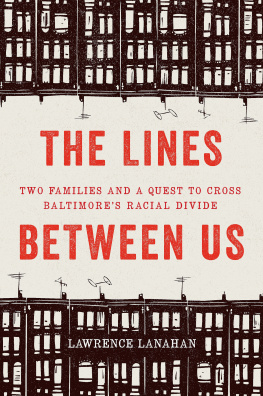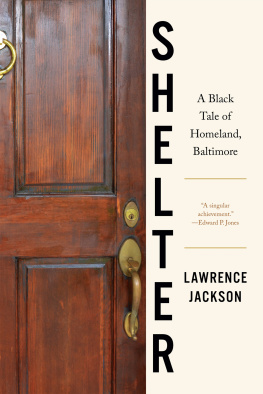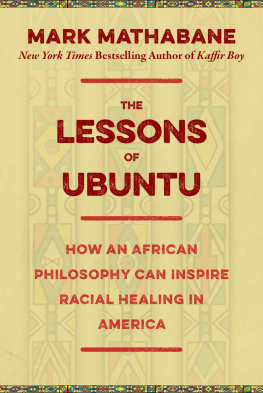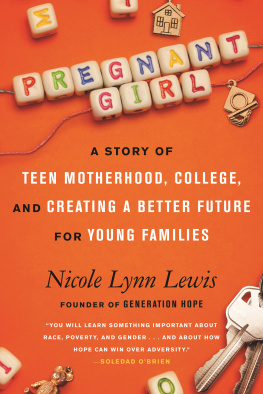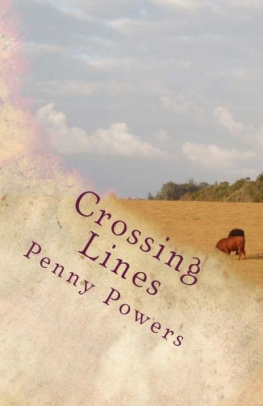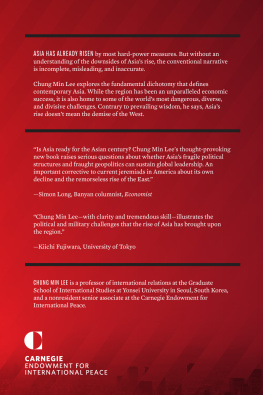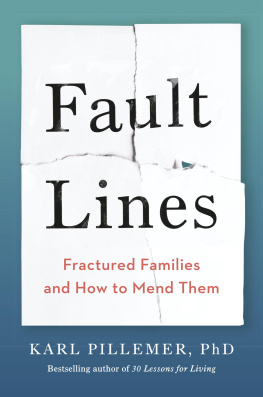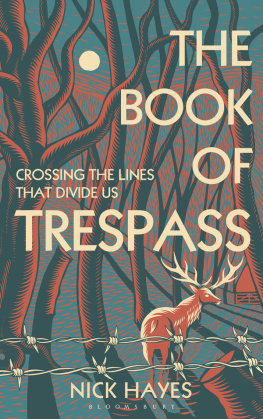Contents
Page List
Guide

THE LINES BETWEEN US
THE LINES BETWEEN US
Two Families and a Quest to Cross Baltimores Racial Divide
LAWRENCE LANAHAN

For Theo, Emil, Andrea, Mom, Dad, and Mary Gibson
Its in the way their curtains open and close.
Respectable Street, XTC
I dont even have to do nothing to you.
Big Brother, Stevie Wonder
CONTENTS
PREFACE
THIS BOOK GREW OUT OF MY WORK AS A PRODUCER FOR WYPR, A BALTIMORE public radio station. We covered a broad range of topics, but race and class were frequently the backstory. Residential segregation in the region had created separate worlds, and racial inequality touched seemingly every aspect of peoples lives, right down to how long they lived. In 2012, I launched a year-long multimedia series about regional inequality called The Lines Between Us.
We produced fifty episodes, but racial inequality in Baltimore is so complex and deeply rooted that much remained unexplored. As I considered writing a book about segregation and racial inequality in Baltimore, events elsewhereparticularly the death in 2014 of Michael Brown in Ferguson, Missourirevealed similar dynamics at work in other regions. Across America, wealth and health followed whiteness, and people and places were penalized for blackness. For the book I had in mind, I thought, now is the time.
And Baltimore was the place. As a civil rights lawyer once put it to me, Baltimore was a petri dish. Segregation and inequality flourished in the Baltimore region, and several major experiments to abate those conditions had been conducted.
Soon after I began planning the book in earnest, Freddie Gray died of injuries sustained while in police custody. The book seemed more urgent than ever.
In The Lines Between Us: Two Families and a Quest to Cross Baltimores Racial Divide, I have attempted to vivisect the region and expose some of the pathologies that maintain segregation and inequality. I have grounded the story in the lives of real people, including a black mother in a poor city neighborhood trying to find better opportunities for her son; a white evangelical couple trying to reconcile their faith with their privilege in the suburbs; and a civil rights lawyer fighting for fair housing on both sides of the citys border. In their stories, I hope not only to make clear how forces in this region created its black spaces and white spaces, its poor spaces and rich spaces, but also to illuminate the obstacles and breakthroughs that await people who try to break down the lines between us. There are no easy answers in the book, but I hope youll see how urgent the questions are.
This book is not an attempt to convey the black experience in Baltimore. Society and institutions regard me as white and place me in different circumstances than people who are not white. What I can try to do as a white journalist is to write about the entire region and the forces that divide it. Segregation pays dividends to white Americans, in the wealth their homes generate, how they are policed, the resources in their schools, and many other ways. I have been a witness to whiteness in this region my whole life. I grew up in a small suburban town outside Baltimore that was 95 percent white, the kind of place where white strangers felt perfectly comfortable making racist comments in front of me. As a young person, despite feeling like I knew who the real racists and bigots were, I casually indulged in racist jokes, stereotypes, and slurs. Its easy to tell yourself that youre not actually racist in a place that is so white. Leaving town for more heterogeneous placesin particular, a state collegedisabused me of that notion and fostered a conviction that I needed to combat the culture that had polluted my youth. I eventually moved back to the region to live in Baltimore City. I have lived here for fourteen of the past eighteen years and have reported on the dynamics of segregation and racial inequality for over a decade.
Although notorious for hypersegregation, the Baltimore region is not unique. The song remains the same, even if other regions change the tune a little. This book is a lens for looking at a place. Wherever you live, I hope it helps you understand where you fit in the deeply American story I am telling.
Some notes on the books format and sources: Many books have detailed the roots of American segregation during the first two-thirds of the twentieth century. Arnold Hirschs Making the Second Ghetto: Race and Housing in Chicago 19401960 and Thomas Sugrues The Origins of the Urban Crisis: Race and Inequality in Postwar Detroit are two of them. In Not in My Neighborhood: How Bigotry Shaped a Great American City, Antero Pietila lays out how Baltimores civic leaders created a landscape of inequality through segregation ordinances, redlining, blockbusting, and other policies that mostly preceded the Fair Housing Act of 1968. The Lines Between Us focuses on the five decades since the passage of that legislation, during which time the truly integrated and balanced living patterns envisioned by its architects failed to materialize. I spend only as much time on the early twentieth century as is necessary to establish the context for this depiction of a metropolitan region taking on the unfinished business of the civil rights movement.
To reconstruct the last five decades, I conducted over two hundred interviews; collected over seven hundred newspaper and magazine articles; read scores of research articles and other secondary sources; scoured stacks of filings and court transcripts at a federal courthouse; plodded through copious pages of legislation; unearthed audio and video recordings and transcripts to put myself in the room as I wrote scenes from the past; digitally scanned hundreds of memos, letters, and other primary sources from several local archives; resuscitated relevant reporting of my own from years past; and took my pen, pad, audio recorder, and camera on reporting trips to capture scenes in person.
A number of names have been changed to protect individuals privacy, sometimes because of stated safety concerns. I printed the N word in full when a black person used it in the context of fighting oppression, but not when white people used it to further oppression. Dialogue appears within quotation marks. Some dialogue I witnessed; other dialogue comes from transcripts, recordings, and journalistic accounts. I occasionally use dialogue taken from sources recollections. I followed up with sources months after their original interviews to ensure they were confident enough in their recollections that I could use the dialogue, and, where I could, I triangulated with other sources who were present. I was present to report on many of the scenes from 2014 onward, both in the lives of the books main characters and at public events.
Some authors place themselves in the story when writing narrative nonfiction. I felt that my experience in this region was not sufficiently illuminating to do so. Because I was out reporting so often, I occasionally step into the narrative, but it happens infrequently. It would have been jarring to leave myself in. Youll see several disclosures in the endnotes, mostly in part six, about where I chose to excise myself.
Narrative nonfiction demands a large degree of compression and omission. That can give short shrift to people and institutions that are integral to the history that a writer tries to convey. I often describe characters who appear briefly in the book only by their roles (e.g., another advocate, Nicoles aunt). Too many proper names can distract and confuse the reader, and this became apparent during the editing process. Entirely absent from the book are dozens of organizationsmany of them black-ledthat fought for fair housing alongside Barbara Samuels, and many public housing residents and attorneys who volunteered their time. Likewise, legions of neighborhood leaders and activists who have dedicated their lives to community development in Sandtown and other parts of Baltimore did not make it into the book. I regret that there wasnt room for everything and everyone I wanted to include.

